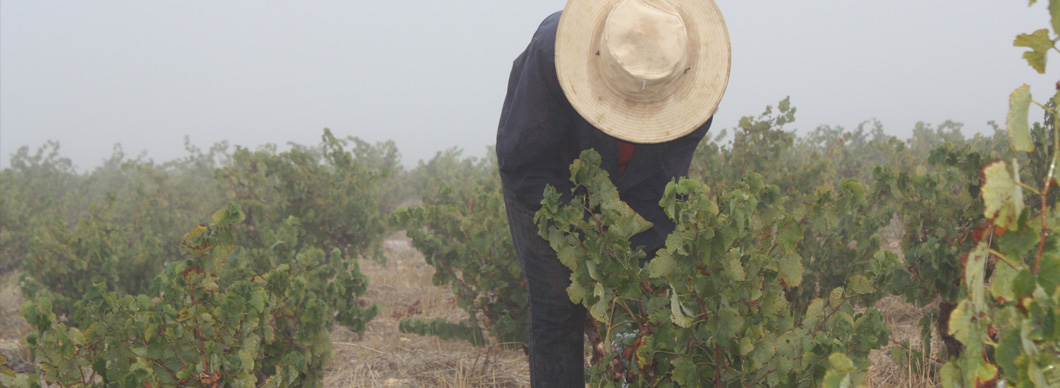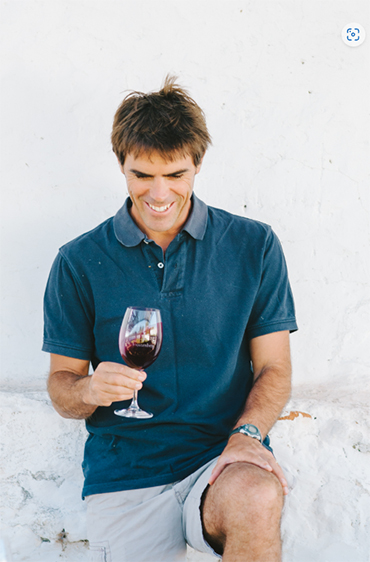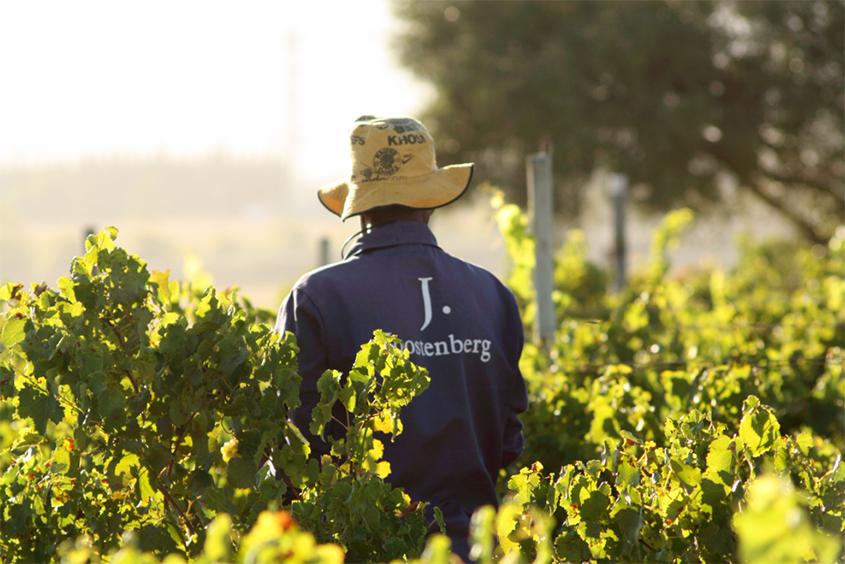Tyrrel Myburgh is the General Manager and head Winemaker of Joostenberg Estate. Corney & Barrow started selling their wines exclusively in the UK in 2023. Find out more about this wonderful South African Wine Estate.
Approx 6 minute read.
Q) Tell us about the Joostenberg Wine Estate, the family history and your role?
Joostenberg has been owned by my family for five generations. Wine was made on the estate before my great-great-grandfather bought the farm, and there are records of Pontac (a black variety) and Muscat being sold as far back as the late 1700s. In 1947, winemaking here ceased, and from 1948-1998, the grapes were sold to other wineries instead. I started farming at Joostenberg in 1999 and resumed the winemaking tradition… a 50-year hiatus!
During my childhood, farming activities were quite diverse, including vineyards, cereals, dairy farming, pig farming and even tobacco. Every day on the farm was different, making it an amazing place to grow up. I later started studying law at university but realised very quickly that it wasn’t for me, so I ended up with a degree in philosophy and an appreciation for wine instead! After further studies in viticulture and oenology and a few vintages in various wineries, I returned to the family farm as the GM and head winemaker. My wife, Anette, and brother, Philip, are also involved, but their main focus is on other aspects of our business.
Today, we have 28ha of organically certified vineyards, which are used to make Joostenberg Estate wines. We also work with vineyards on two neighbouring farms and use these grapes to make wine under the Myburgh Bros. label.
Q) Can you talk us through the different wines you make and your vision behind them?
There are eight wines in the Joostenberg Estate range; they are all small bottlings, and each tells a different story.
Joostenberg Chenin Blanc is a fresh, mainly stainless steel fermented wine made from various vineyards. Die Agteros Chenin Blanc is made from the oldest vineyard on the farm and spends several months on the lees, making it more “layered and textural”. Fairhead is a blended white that is quite aromatic; it’s dominated by Chenin and Roussanne and includes smaller portions of Viognier and Alvarinho.
For the red wines, the Family Blend is mainly Syrah and Mourvèdre, which I aim to make in an approachable style so it can be enjoyed on any occasion with family and friends. Klippe Kou Syrah is made from grapes planted on the rockiest site, it’s pure and aromatic, an authentic expression of Syrah. Philip Albert Cabernet Sauvignon includes a touch of Merlot but is what I call a traditional style of Cab. It spends between 10 and 22 months in French oak barrels. Bakermat is our top red wine, and although the blend varies from year to year, it is normally dominated by Syrah and has a smaller but significant portion of Mourvèdre.
The final wine in the Joostenberg range is Chenin Blanc Noble Late Harvest. It is made from a south-facing vineyard, on a slightly lower site which is affected by Botrytis cineria (noble rot) in late autumn. We do several pickings over a 3-4 week period, selecting bunches that are infected. It is a slow, painstaking task with a beautiful, sweet reward! The trick is to achieve the right balance between sugar and acidity. It has become a very important part of our range over the years.
As I’ve lived in the area my whole life, I know the vineyards on neighbouring properties quite well. The vineyards we use for the Myburgh Bros. wines are all old, dry-farmed, bush-vine vineyards. The aim is to retain freshness, balance and deliciousness in these wines by keeping the winemaking really simple and the alcohol levels moderate.
The Old Vine Chenin Blanc is made from two vineyards planted in 1984 and 1988. Fermentation is in stainless steel, which results in a very fruity wine with a juicy and slightly weighty core. The red, called Little j, is medium-bodied, quite fruity and has very soft tannins. It’s a blend of mainly Cinsault and Syrah, and although it spends about ten months in seasoned oak barrels, the fruit shines through, meaning the oak influence is difficult to detect.
Q) All of your vineyards are farmed organically. Can you tell us more about this, the reasons behind it, and the impact it has had on the wines?
Wine has this incredible, fundamental connection to the soil and the site, so to both protect and enhance this, we treat the soil and the environment with the utmost care and respect. Farming organically is a tool that helps us with this pursuit and contributes towards our aim to make wine that is both delicious and authentic. We all have a role to play in climate change mitigation and in reversing environmental degradation – our farming practices mirror this.
The main focus of organic farming is to improve the quality and health of the soil and the surrounding environment. To help achieve this, livestock graze in the vineyards during winter – their manure both fertilizes and improves biological activity in the soil. We also use straw mulch to reduce moisture loss and unwanted weed growth, while a cover crop is planted in autumn to add organic matter to the soil. Our winery practices are also governed by organic regulations, meaning certain products and practices are prohibited.
During our organic journey, I have observed an increase in purity and freshness within our wines, with a small decrease in alcohol levels too. It is difficult to define the changes exactly, but I believe the wines have become more authentic, better reflecting their place and terroir.
Q) Tell us more about the Paarl region in South Africa – what makes it so special and how do you see things evolving for wines from this region in the future?
The Paarl winegrowing region is the biggest South African wine region and has 14000ha of vines. It is very diverse in terms of soils, landscapes and climate, and the sub-regions within Paarl are starting to develop a strong identity with their wines. The process of working out what is best for the Paarl sub-regions is ongoing, and I think this is and will be one of the major focus areas going forward.
Joostenberg is in the south-western corner of the region and our influences are very different to other parts of Paarl. In general, we harvest later and have a bigger coastal influence.
Q) What is your favourite part of the winemaking process and why?
Winemaking starts in the vineyard and winter pruning is my favourite time of the year – there is something special about spending time with each vine. When pruning young vines, you get the chance to “shape the future”, and with the older vines, you need to “go with the flow”. It’s a good time to think about the past and contemplate the future.
Q) When you are not making wine, what might we find you doing?
I enjoy endurance sports, mainly trail running. It’s the way I clear my mind and gather my thoughts after a day at work. When I have a bit more time, I love to road trip with my family in SA and surrounding countries.




